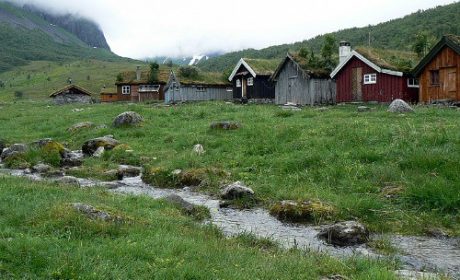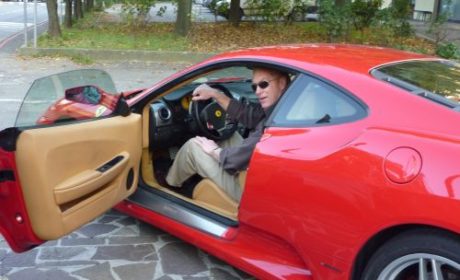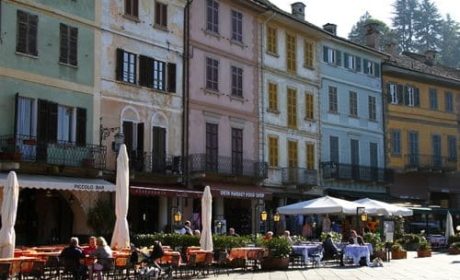Perhaps Belgrade, Serbia isn’t the most popular of European destinations, but this city packs a big punch whit it comes to things to see and do. Guest contributor, David Johnston from Travelsewhere, is taking us on a beautiful Belgrade self guided walking tour and more. Come along!
Visiting the Balkans region of Europe presents travelers the chance to see something new, and probably, unexpected. For urban destinations in the Balkans, it’s nearly impossible to go past Belgrade, the capital of Serbia.
Essentially at a crossroads for the entire corner of the continent, adding Belgrade to a European visit couldn’t be easier or more rewarding. For my trip through Serbia, a visit to Belgrade was simply inevitable and indeed a highlight.
The largest city (and former capital) of the lands that once belonged to Yugoslavia, much has changed in Belgrade, Serbia and really the wider region. Honestly, that dark period continues to sink deeper and deeper into the recesses of history. If the troubles in the 1990s is still what springs to mind when you think of Serbia, a Belgrade trip will fix that misconception right up.
Table of Contents
Belgrade self guided walking tour itinerary

While Belgrade is a city that is modernizing at a great pace, even a self-guided visit can show you the different layers that reflect its multiple reinventions. This also means that your visit can delve into whichever aspect of the city most appeals to you.
Chances are though that an independent visit is going to focus on the central district of Stari Grad and nearby major cultural attractions.
Learn about the city’s history at the Belgrade Fortress

While the center of Belgrade features the city’s Old Town or “Stari Grad”, nowhere reflects the city’s storied past like Belgrade Fortress. Watching over the confluence of the Sava and Danube rivers, Belgrade fortress consists of multiple layers of fortification and is engulfed within Kalemegdan Park.
Before there were walls, this spot is where Belgrade began back in the 3rd century BC. With the Romans fortifying the area, later centuries saw everyone from the Byzantines, to the Ottomans and Serbians expand upon the fortress.
Visiting the upper section of the fortress by the Victory Monument offers spectacular views of Belgrade’s rivers while the lower section of Kalemegdan Park is littered with ruins. Inside the fortress, several sections of the fortifications host museums, including the city’s Military Museum surrounded by artillery cannons and rockets, plus a torture museum.
Boomer Travel Tip
MedjetAssist Members who are hospitalized 150 miles from home receive medical transport to a home-country hospital of choice. Memberships from $99.
Explore the Old Town streets of Belgrade

Beyond the fortress, much of the rest of Belgrade’s Old Town consists of a dense cluster of major modern streets. It’s likely not the kind of European old town that you have in mind. Still, around Republic Square and along streets like the pedestrian boulevard Kneza Mihaila you’ll find a curious collection of different architectural styles, ranging from baroque and art nouveau to soviet brutalist.
Often what these buildings house is fairly incidental—banks or boutique shops—but some house important institutions like the National Museum of Serbia or the local university faculties. Then there’s the opulent facade of the Hotel Moskva which is hard to pass without noticing and ultimately admiring.
Certainly, no matter where you walk in Belgrade’s centre, you’re going to be looking up a fair bit.
Visit Skadarlija for its beauty

If a cozy, more classically pretty place is what you’re after, then head to the little neighborhood of Skadarlija. It may be just a few streets of Belgrade, but this cobbled bohemian quarter almost feels like a completely different city.
Lined with restaurants and other establishments, Skadarlija is defined by its vibrant flowers everywhere and occasional murals. Certainly a far cry from an expectation of cold Soviet era urban wastelands.
Beyond the Belgrade walking tour: stop at the Church of Saint Sava

As far as religious landmarks go in Belgrade, none come close to the enormity that is the Temple of St. Sava. Among the largest orthodox churches in the world, the Church of St. Sava is dedicated to the founder of the Serbian Orthodox faith, Saint Sava. The church’s location was chosen as it is this spot where the remains of the saint were said to be burned in 1595 by the Ottomans.
If you were to view the cityscape of Belgrade from the sky, it would be impossible to miss this church and its Byzantine style. Standing 82 meters high, the enormous dome of the church means it houses a vast interior.
Don’t miss—as I sorely did—the church’s lavish crypts and yet another church found below the main church itself. Although it lies several kilometers from the city center, it’s one sight not to be missed.
Other Churches of Belgrade to explore

While they may lack the scale of the Church of St. Sava, there are other impressive churches to be found elsewhere in Belgrade. The hallowed, gilded interior of the Church of Saint Mark gives quite the first impression. Not to be outdone, there’s also the Holy Archangel Michael church that houses various relics and a visually striking altar.
Experience Belgrade’s café culture
Café culture is a big part of life in Serbia as people regularly visits cafes to socialize and meet up. No surprise then that Belgrade is bursting with cafes, from the low-key, to the classy, to the trendy.
What they all tend to share though is covered outdoor seating areas so that you can catch up in the fresh air during warmer months. Probably the biggest drawback though is that smoking is fairly commonplace and can intrude on that desirable fresh air.
Where to enjoy Balkan Cuisine
Since Belgrade is a major city and fairly popular tourist destination, you’re spoiled for choice when it comes to dining options. As previously mentioned, Skadarlija is home to many restaurants such as Dva Jelena that offer traditional Balkan cuisine. English language menus are to be expected as this can be a somewhat touristy place to eat.
Perhaps slightly less touristy but still an enjoyable spot for great Balkan cuisine is the affordable Mala Gostionica.
More things to see in Belgrade

Hopefully even just this rundown of attractions should show you that a self-guided tour of Belgrade is both possible and rewarding. Although I focused on the main attractions around the city centre here, there are other parts of the city to be explored as well like the riverboats down on the Danube.
With a day or two in Belgrade, you can certainly hope to gain an appreciation for what Serbia is like. Maybe it will even encourage you to visit more of this underrated destination!
Not a do-it-yourselfer? Check out these Belgrade tours.



